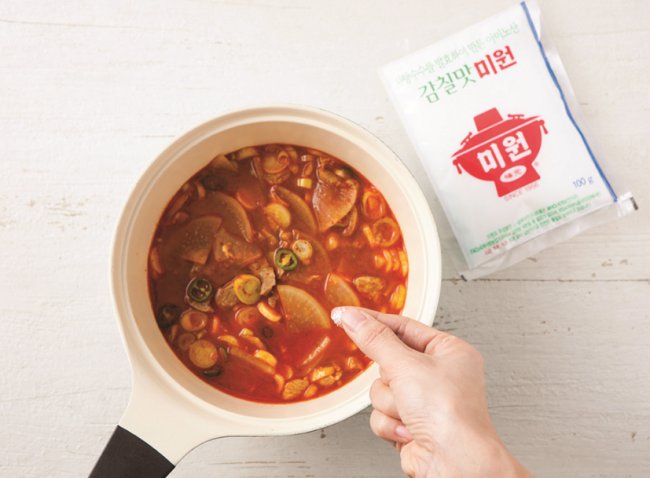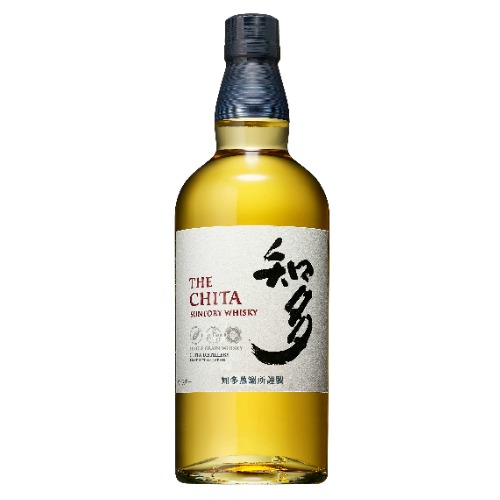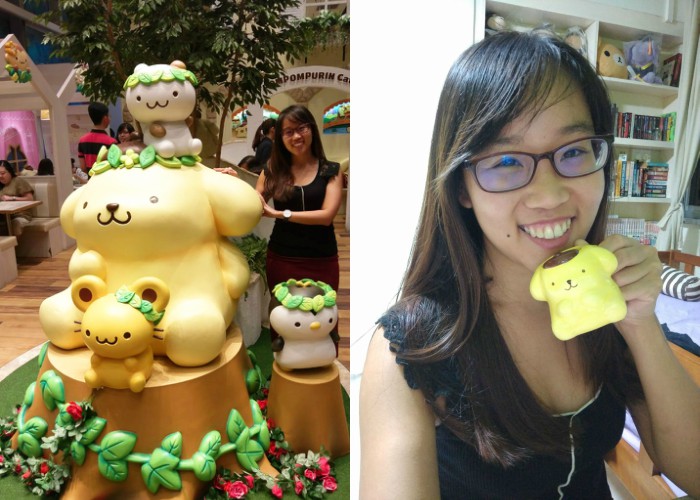Battling MSG myths: Is MSG really bad?
At restaurants in South Korea, one can easily find lists explaining the origins of ingredients. And next to that, there are usually notifications that say, “We do not use MSG in our food.”
Monosodium Glutamate, also known as MSG, is a type of seasoning that was widely used in the early 20th century but began to be chastised as an “enemy of health” around the 1970s and 1980s.
A 2016 survey conducted on some 1,000 working mothers across the country found that 61 per cent believed MSG is unhealthy.
MSG
MSG was first discovered in 1907 by a Japanese chemistry professor, Kikuna Ikeda. He studied what made dashi — a seaweed broth commonly used in Japanese cuisine — so tasty. From broth, Ikeda isolated the chemical acid monosodium glutamate that was responsible for the savory flavor, or “umami” in Japanese. It was something that could not be categorized into salty, sweet, sour or bitter. The acid could even be turned into crystals that people could sprinkle on food.
He patented the method for extracting MSG and began selling MSG commercially. He launched the brand Ajinomoto and later sold its technology to Korea’s Dong-A Hwa Sung — what is now Daesang Corp. — which made a flavor enhancer, Miwon.
For many years, the iconic seasoning Miwon could easily be found in South Korean kitchens. Many still consider Miwon of Daesang and Dasida of CJ as synonymous with MSG.
Soon after Miwon was launched in the mid-1950s, its sales skyrocketed and it took 50 per cent of the seasoning market share in the 1970s. The company even built a factory in Indonesia, the first attempt by a Korean company to build an overseas factory.
However, in the early 1990s, Daesang’s rival Lucky — now LG Household & Health Care — advertised its product as “MSG-free,” touting that it was healthier.
“We only included a powder of beef, onion, garlic and soy sauce in our product,” was the main advertising phrase of Lucky.
Since then, the debate on MSG has been raging in the food community.
“My husband often says that he doesn’t seem to digest food that has MSG in it, so I naturally started to avoid using it,” said Shin Yong-hee, a 43-year-old housewife living in Pangyo.
“Instead, I tend to use seasonings or flavor enhancers that do not include MSG, such as those that only use extracts of anchovies and seaweed,” she said.
MSG has been commonly linked to various health problems, dubbed in the US as “Chinese restaurant syndrome,” a claim by Dr. Ho Man Kwok in 1968.
Kwok suggested that MSG might be behind symptoms, such as headaches, nausea and a strange numbness at the back of the neck, among those who consume a certain dose of it daily. The claim has sparked a number of scientific studies and books.
In 1995, the US Food and Drug Administration commissioned the Federation of American Societies for Experimental Biology to look into whether MSG was harmful, but it concluded that the Chinese restaurant syndrome was “pejorative and not reflective of the extent or nature of the symptoms.”
The American Chemical Society found mild symptoms may occur in some individuals if they consume large amounts of MSG on an empty stomach.
“Glutamate is found in tons of common foods that are rich in protein such as meat, dairy products, and vegetables all have glutamate,” the ACS said in an article in 2014.
MSG can be easily found in other categories of food as well, according to research. Over 30 per cent of flour’s protein consists of glutamic acid.
Tomatoes also contain a high percentage of glutamic acid. Others include cheese and mushrooms. Without adding a pinch of MSG powder, a tomato-sauce pizza topped with cheese and mushrooms can be rich in MSG.

Photo: Daesang
Last year, a research team led by Oh Sang-suk, a professor of food engineering from Ewha Womans University, found that an up to 25 per cent intake of sodium could be reduced by alternatively using MSG.
Data from the Food and Agriculture Organisation of the United Nations and the World Health Organisation also showed that when MSG is used with salt, the total sodium intake amount decreases by 20 to 40 per cent.
In 2016, Korea’s Ministry of Food and Drug Safety released a statement that MSG as an ingredient is recognised as safe. Earlier this year, the ministry newly categorized MSG as a “flavor enhancer,” following a revision of food additives labeling regulations here.
Korea is the only country in the world that labels whether food additives are natural or a complex of chemicals, according to the ministry. In European countries and the US, food additives are categorized based on their purpose of use.
The International Headache Society also recently announced that MSG had been removed from a list of classification of headache disorders, stating that MSG has nothing to do with headaches. MSG had been on the list along with alcohol and caffeine since 1981, as substances that cause headaches.
Meanwhile, food companies have become more vocal in recent years.
According to Daesang, MSG is harmless to human health, as it is based on fermented raw sugar. The fermentation process of MSG is similar to those of Korea’s traditional fermented pastes, such as gochujang and doenjang.
Ninety-nine per cent of Daesang’s Miwon consists of MSG.
Despite such developments, many Koreans still associate salty food with MSG, although in reality, such food may not contain any MSG.
One example is instant noodles. The main ingredients of the packet of powder that comes with the noodles include beef, garlic, onion, soy sauce and other seasonings.
Companies say that the powder is made in a way similar to how beef broth is prepared at home. Other lightly salted snacks such as Honey Butter Chip also do not include MSG, according to companies.
Industry insiders are now hoping for flavor enhancers to win back consumer trust.
“For over 20 years, Daesang was in the centre of controversy over whether its Miwon was safe to consume. Meanwhile, the company has been shifting its main target audience, especially toward the young generation who do not have such a stereotype,” said an industry insider.
After gaining trust as well as popularity among single households in recent years for its convenience, boosted by campaigns on MSG’s relative safety, domestic sales of Miwon recorded 45 billion won ($42 million) last year, marking an increase in three years. Its global sales rose by 2.5 times, reflecting its popularity, especially in the Southeast Asian market.
“Since we are now cleared of rumours and false information, consumer perception toward food additives is improving. Some restaurants are even putting up notes on walls that say ‘MSG is a harmless food additive.’ We hope the safety issues surrounding Miwon will only get better, as we continue to promote the benefits of food additives,” said Chung Kyu-ha, an official in charge of Daesang’s seasoning division.
However, some food manufacturers that have joined the food additive business continue to stay away from MSG and promote their products as healthy and natural. Meanwhile, LG Household & Health Care officially ended its food additive business in 1996.

Sempio, a household name for soy sauce, released the liquid-type food additive Yondu in 2012, advertising the product as “extracts from fermented beans that can add depth to your cuisine.” The company has seen an accumulated 18 billion won in sales over the past five years since the product’s launch.
CJ Cheil Jedang, another leading food manufacturer in Korea, launched a food additive product that comes in small portions, targeting single households.
Under the rebranded name “God of Cooking,” CJ aims to attract young consumers as well as loyal customers who have been using its Dasida brand for over 40 years.
“While our signature Dasida has been targeting housewives with a long experience of cooking, God of Cooking is targeted at single households, newlyweds and even housewives for different flavor options,” said Lee Jong-sik from CJ CheilJedang’s sauce marketing division.
Published at Sat, 26 May 2018 04:00:00 +0000



